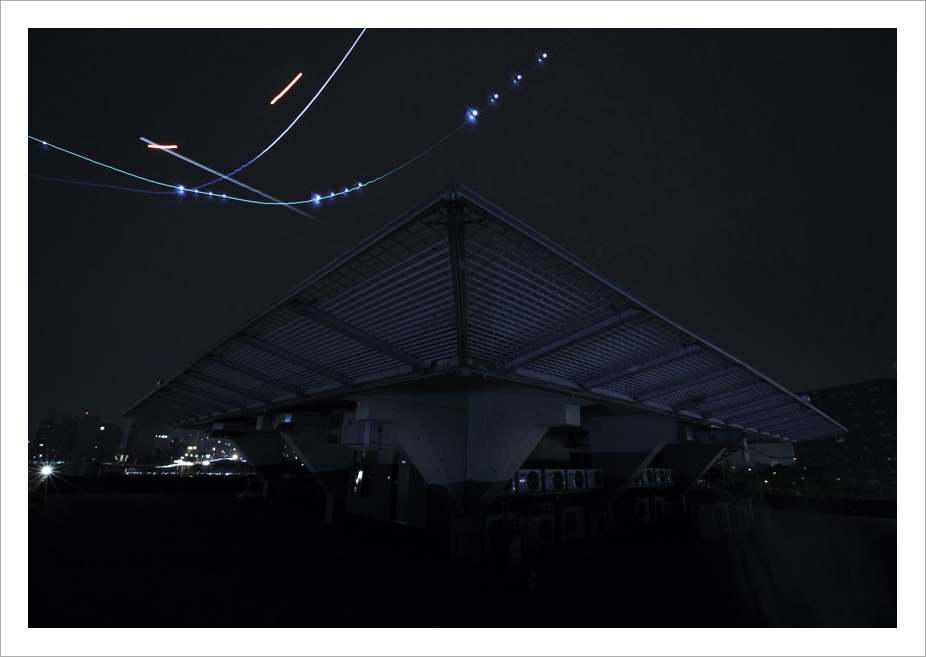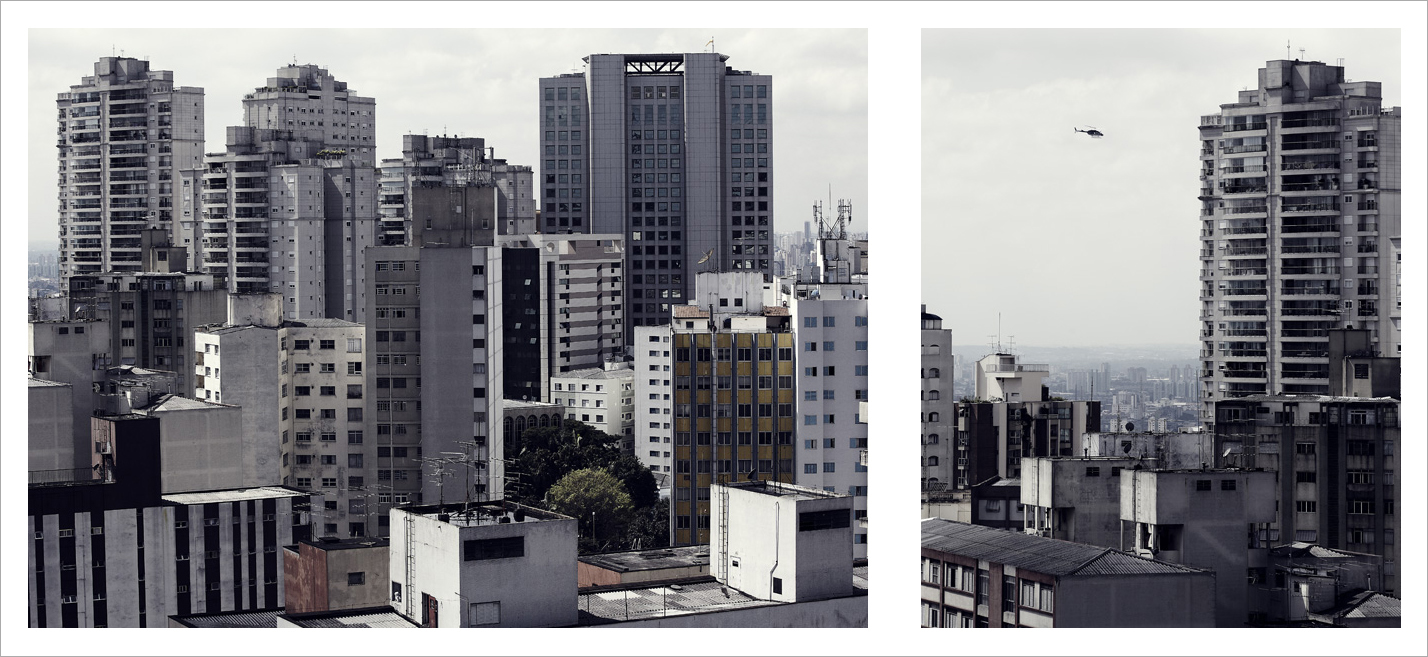In São Paulo, the true elite skip the streets, buzzing between the tops of the skyscrapers that dominate the city, and passing over the plebes stuck in traffic below. Restrictions have come up in last few years, but in the ongoing tussle over the skies, the heli-set is now striking back. Photography by Robert Bellamy, all rights reserved.
Text by Claire Rigby
These are dry days here in São Paulo, where a long spell with no rain is heading for its third month, and where in August a mere 3mm fell, compared with the usual 39mm average. Yesterday morning a desultory layer of the city’s eponymous drizzle, garoa, briefly settled – this light precipitation that once gave São Paulo the nickname ‘terra da garoa’; but it was so slight as to not even trouble the met office’s measuring equipment. Its rumoured appearance promptly made the front pages.
But the lack of rain isn’t the only thing that has some Paulistanos tutting at the sky. A long-running tussle over the limits of helicopter use above this business-centred city took a new turn this week with the fruition of a series of court cases challenging City Hall’s restrictions on helipads – and consequently on the rights of high-flying execs to dodge the traffic chaos and the crime below, and beam themselves straight to their next meeting in some glassy tower.
A sky dotted with humming, darting helicopters is a familiar motif in contemporary São Paulo folklore, and it’s the opening image of dozens of foreign-language profiles of the city. There’s some statistical truth to it: according to ABRAPHE (the Brazilian Association of Helicopter Pilots), the city is host to around 400 registered helicopters, much trumpeted as one of the largest private fleets in the world.
Helicopters have become rarer, though, since 2009, when a Prefeitura (City Hall) clampdown reduced the number of high-rise helipads in São Paulo by 30 per cent, from 272 to 193. At the time, an incremental increase in helipads had led to complaints about noise pollution, as executives darted in from Guarulhos and Congonhas airports for meetings on Avenida Paulista or out in gleaming Berrini, or buzzed up from Avenida Faria Lima for appointments in Alphaville, an out-of-town hub and home to divisions of companies like the bank Bradesco. At some of the city’s chic hotels, guests fly in from the airport and alight in style – on the top of the svelte Emiliano hotel, for example, in the heart of Jardins, particularly around the annual Formula One event in November, when helicopter use reaches a zenith.
The Prefeitura’s 2009 ruling set strict restrictions, banning the use of helipads within 300m of a school or hospital and judging them on a series of environmental criteria, including noise levels. It shut down the landing spots atop dozens of buildings, including that of the powerful FIESP (the Federation of Industries of São Paulo State), a striking, slope-fronted skyscraper on Avenida Paulista. Twelve cases have recently been brought against the ruling by the owners of high-profile buildings like the Faria Lima Financial Center and the Office Tower Itaim, or by businesses that operate inside them, including Santander and Itáu. The latter bank is the only one of the plaintiffs in the five cases to have so far been heard that has won its case, arguing that its helipad’s existence predated the school erected nearby in 2008 with the blessing of planning authorities.
The helicopter problem isn’t just a Paulistano one: in Rio in August, flights around Christ the Redeemer statue and Sugarloaf Mountain were reined in, with helicopters banned from flying around the tourist attractions and ordered to climb to 1,500m, as opposed to the 1,000m previously in force.
Meanwhile in São Paulo, a bill to reform the rules around helipads is currently being proposed, and may yet be voted on this year, that would reduce the 300m distance between helipads and schools and hospitals to 200m, and make exceptions for helipads already in use and those producing less than 95 decibels of noise.
But amidst all the commotion of court cases and political jockeying, one local business is just fine with the rules and will even, it hopes, soon be thriving thanks to them. The Maksoud Plaza, once São Paulo’s flagship luxury hotel and now a fascinating, retro-kitsch wonderland, where the sense of staying in a 1980s timewarp is an inescapable and charming part of the experience, has just unveiled its long-awaited helipad. ‘Take down the coordinates!’ crowed its press release (23º 33’ 47″ S / 46º 39’ 04″ W), announcing its fully licenced landing spot high on the ridge of Avenida Paulista, on top of the 441m building. With permission to receive flights from guests and non-guests alike for a touch-down fee of R$400 a time, the hotel is promising a new bar and restaurant to go just below the helipad. Just the spot for a refreshing shandy, scanning the sky looking for the next rain to fall. A new garoa infusion is expected – half-heartedly – for the morning of the 19th.




